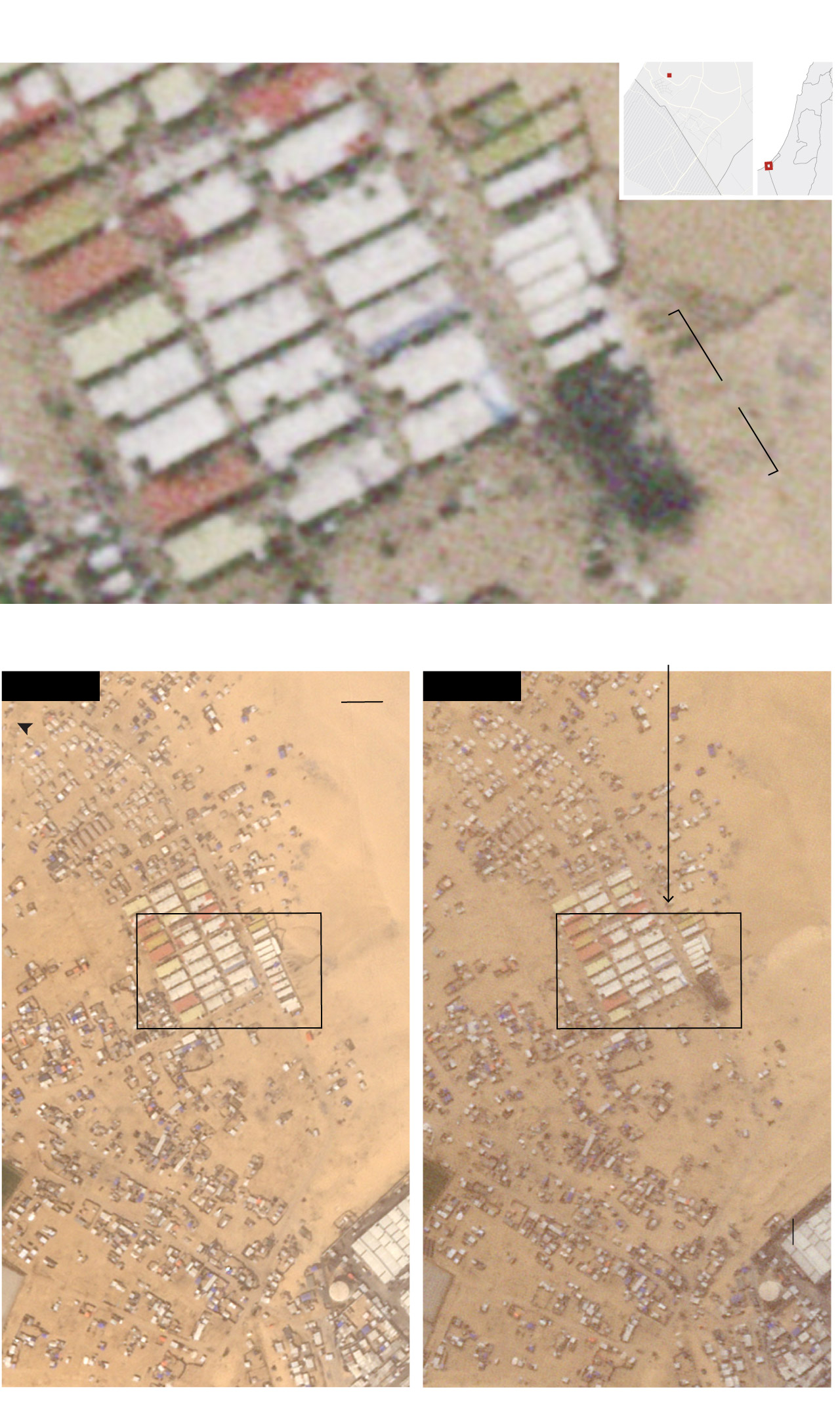U.S. bomb fragments found at site of Israeli strike on Rafah camp
Israel said the attack was a “targeted” strike against two Hamas militants, conducted using “the smallest munition” Israeli fighter jets can use. It said that the fire that broke out at the camp was “unexpected and unintended,” and that it was investigating the possibility that secondary explosions ignited the blaze.
The findings do not contradict Israel’s assertion that it used a small munition, weapons experts said. Israel said it used munitions containing “17 kilos of explosive material,” a weight consistent with the size of a warhead used with a GBU-39, according to Trevor Ball, a former explosive ordnance disposal technician for the U.S. Army.
Secretary of State Antony Blinken said Wednesday that the United States couldn’t confirm what weapons were used or how they were used in the strike. Speaking to reporters, Blinken called the attack “horrific” and said anyone who has seen images of it has been affected on a “basic human level.”
The United States has been “very clear with Israel,” Blinken said, on the need to “immediately investigate and interrogate exactly what happened.” When asked if the strike will affect U.S. military assistance to Israel, he said Washington will “await the results” of Israel’s investigation.
“Munitions like the GBU-39 are often selected specifically to minimize the chance of harm to civilians or civilian objects,” said N.R. Jenzen-Jones, director of Armament Research Services. Regardless, he said, “with any targeted strike — and especially any strike being conducted in close proximity to civilians — a robust collateral damage estimation procedure is required.”
GET CAUGHT UP
Summarized stories to quickly stay informed
More than 36,000 Palestinians have been killed in the war, according to the Gaza Health Ministry, which does not distinguish between civilians and combatants but says the majority of the casualties are women and children. Israel launched its campaign after Hamas militants stormed Israeli communities near the border and killed about 1,200 people in October.
Images of the fragments, taken by Palestinian journalist Alam Sadeq on Monday, showed the cage code, or five-character sequence used to identify vendors that sell weapons to the U.S. government. The “81873” designation links the fragment to Woodward HRT, a weapons components manufacturer registered in Valencia, Calif.
Sadeq’s video and images were verified and geolocated by The Post. He traveled to Rafah from nearby Khan Younis early Monday to document the aftermath of the strike. As he walked through the wreckage, he noticed a boy sitting on the ground examining the remnants of an electronic board.
“He told me that this piece was inside his tent,” Sadeq said. “I knew that this missile was used for bombing.”
The United States supplied Israel with 1,000 precision guided bombs in 2023, according to an arms transfer database maintained by the Stockholm International Peace Research Institute.
The Biden administration has not halted transfers of this munition over the course of the war. Last month, the State Department approved a transfer of more than 1,000 GBU-39/B small-diameter bombs with containers on the same day that Israeli forces bombed a convoy of World Central Kitchen aid workers in Gaza, killing seven.
The attack late Sunday struck near a logistics base for the U.N. Relief and Works Agency for Palestinian refugees, destroying at least four tin structures used as shelters for the displaced, according to satellite imagery from Monday provided by Planet Labs. More than a dozen tent-like structures were also visible between the tin buildings and the U.N. warehouse, a distance of about 500 feet, in images before and after the strike.

Tal al-Sultan tent camp after
and before IDF’s strike
Makeshift accommodation
(visible in satellite from early January)
SAMUEL GRANADOS / THE WASHINGTON POST

Tal al-Sultan tent camp after
and before IDF’s strike
Makeshift accommodation
(visible in satellite from early January)
SAMUEL GRANADOS / THE WASHINGTON POST

Read More: U.S. bomb fragments found at site of Israeli strike on Rafah camp

